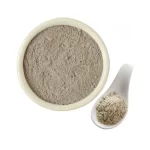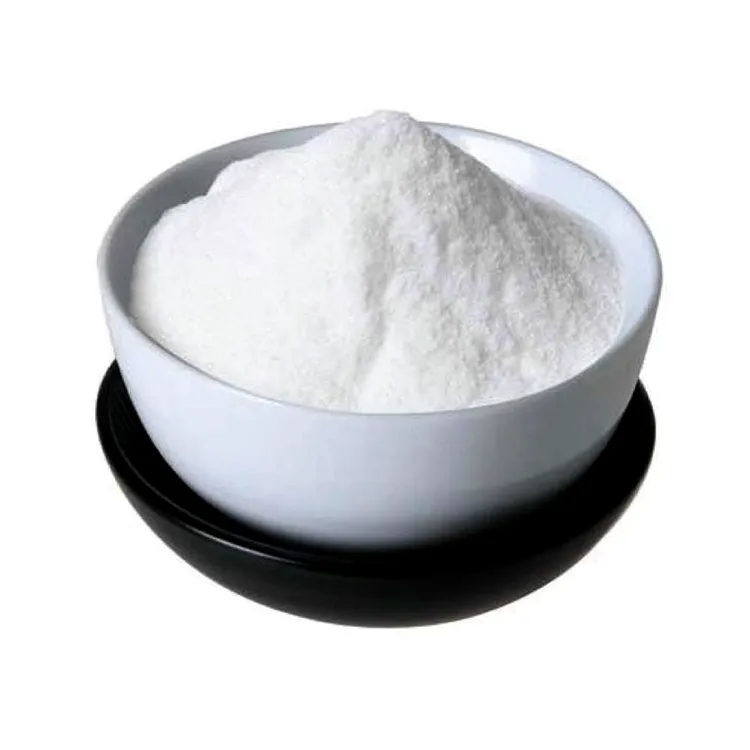
SODA ASH (SODIUM CARBONATE)
December 6, 2023
BENTONITE POWDER
December 6, 2023SODIUM BICARBONATE
Sodium bicarbonate (IUPAC name: sodium hydrogen carbonate), commonly known as baking soda, is a chemical compound with the formula NaHCO3. It is a salt composed of a sodium cation (Na+) and a bicarbonate anion (HCO3−). Sodium bicarbonate is a white solid that is crystalline, but often appears as a fine powder. It has a slightly salty, alkaline taste resembling that of washing soda (sodium carbonate). The natural mineral form is nahcolite. It is a component of the mineral natron and is found dissolved in many mineral springs.
Sodium bicarbonate (IUPAC name: sodium hydrogen carbonate), commonly known as baking soda, is a chemical compound with the formula NaHCO3. It is a salt composed of a sodium cation (Na+) and a bicarbonate anion (HCO3−). Sodium bicarbonate is a white solid that is crystalline, but often appears as a fine powder. It has a slightly salty, alkaline taste resembling that of washing soda (sodium carbonate). The natural mineral form is nahcolite. It is a component of the mineral natron and is found dissolved in many mineral springs.
Sodium Bicarbonate is the monosodium salt of carbonic acid with alkalinizing and electrolyte replacement properties. Upon dissociation, sodium bicarbonate forms sodium and bicarbonate ions. Ion formation increases plasma bicarbonate and buffers excess hydrogen ion concentration, resulting in raised blood pH.
Because it has long been known and is widely used, the salt has many related names such as baking soda, bread soda, cooking soda, and bicarbonate of soda. Sodium bicarbonate is a white, crystalline powder that is commonly used as a pH buffering agent, an electrolyte replenisher, systemic alkalizer and in topical cleansing solutions.
Sodium bicarbonate is produced on all continents of the world and the global number of production sites is estimated to be 30-50. The estimated total amount of sodium bicarbonate used in 2001 is 2 million tons. Sodium bicarbonate is used as animal feed additive, human food additive and it is used in pharmaceuticals. It is also used for the production of other chemicals and it used in cosmetics and detergents and other household cleaning products. It is present in a large number of consumer products but the pure product is also available to consumers. The percentage of use is as follow: Food preparation, 30 %; Animal feed 20%; Rubber and industrial chemicals, 15 %; Pharmaceuticals, 11%; Fire extinguishers, 9 %; Soap and detergents, 5%; Other, including textiles, paper, and leather, 10%.
In cooking, baking soda is primarily used in baking as a leavening agent. When it reacts with acid, carbon dioxide is released, which causes expansion of the batter and forms the characteristic texture and grain in pancakes, cakes, quick breads, soda bread, and other baked and fried foods. Acidic compounds that induce this reaction include phosphates, cream of tartar, lemon juice, yogurt, buttermilk, cocoa, and vinegar. Baking soda may be used together with sourdough, which is acidic, making a lighter product with a less acidic taste. Heat can also by itself cause sodium bicarbonate to act as a raising agent in baking because of thermal decomposition, releasing carbon dioxide.
Sodium bicarbonate can be used to kill cockroaches. Once consumed, it causes internal organs of cockroaches to burst due to gas collection. Sodium bicarbonate can be an effective way of controlling fungal growth. Sodium bicarbonate can be administered to pools, spas, and garden ponds to raise the total alkalinity. This will also raise the pH level and make maintaining proper pH easier. In the event that the pH is high, sodium bicarbonate should not be used to adjust the pH.


